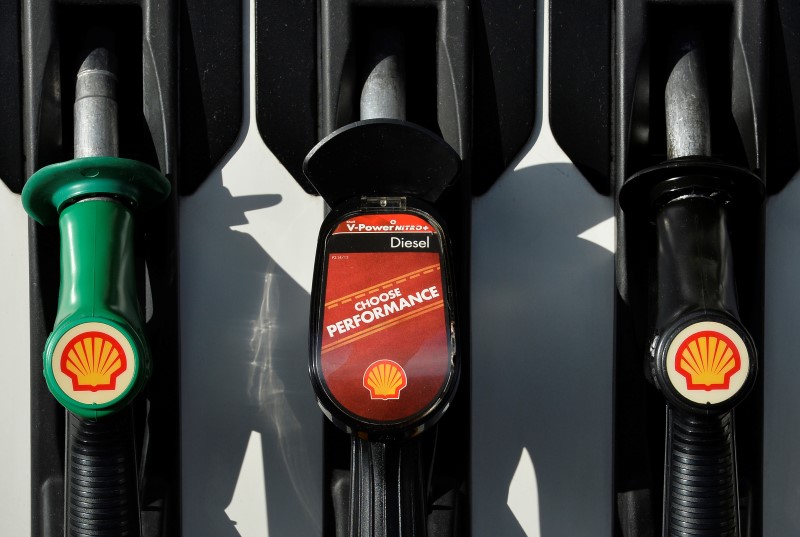Investing
Analysis-China’s gasoline demand peak nears as EV boom hastens transition

© Reuters. A Porsche electric vehicle (EV) charging point is seen during a media day for the Auto Shanghai show in Shanghai, China April 20, 2021. REUTERS/Aly Song
2/2
By Mohi Narayan
(Reuters) – China’s demand for petrol is likely to peak as early as next year as electric vehicle sales soar, several analysts say, bringing forward an energy transition milestone for the world’s biggest polluter and a headache for global refiners.
The International Energy Agency (IEA) and consultancy Rystad Energy have brought forward forecasts of China’s peak gasoline demand by about a year to 2024, while Chinese state majors PetroChina and Sinopec (OTC:) see it in 2025.
The earlier halt in gasoline demand growth in the world’s No. 2 oil consumer will push Chinese refiners to ramp up exports of the motor fuel to Asia and spur them to make more naphtha, diesel and jet fuel, crimping refining margins in the region.
“It will be a challenge for refiners to rebalance their output,” said Toril Bosoni, IEA’s head of oil industry and markets division.
“We are seeing a shift towards higher middle distillates yields like jet fuel and gasoil … also seeing rebalancing of naphtha and gasoline into petrochemicals feedstocks.”
EV BOOM
In January to May, EV’s share in the world’s largest car market jumped to 28%, up from 9% in the same period of 2021, while the share for petrol cars shrank to 72% from 91%, data from China Association of Automobile Manufacturers showed.
China is now looking to spur EV adoption in rural areas by improving charging infrastructure and encouraging banks, local governments and auto makers to offer support, said Gaurav Batra, consultancy EY’s lead analyst of global automotive and transportation.
As a result of accelerating EV sales, Paris-based IEA now expects Chinese gasoline demand to peak in 2024 at about 3.7 million barrels per day (bpd), bringing forward an earlier projection of demand plateauing in 2025/2026.
Rystad Energy also sees the peak at 3.7 million bpd but coming as early as the first quarter of 2024, compared with an earlier projection between 2024 and 2025, said Mukesh Sahdev, senior vice president, head of downstream/oil trading.
The research arm of China’s state refiner CNPC expects gasoline demand to peak in 2025, citing accelerating sales of EVs, and sees gasoline demand shrinking 2.3% annually between 2026 and 2030.
Predicting the country’s refined fuel demand to peak around 2025, top Asian refiner Sinopec’s chairman Ma Yongsheng said on Monday China will strictly control refining capacity and hasten the petrochemical industry’s transition to low-carbon, high-end growth.
GASOLINE SURPLUS
With gasoline consumption having topped out in the U.S., the world’s top gas guzzler, in 2019 and China set to peak around next year, global gasoline markets could move into a surplus from 2025.
The glut is expected to grow steadily over the next five years to about 1.3 million bpd by 2028 in the absence of any significant output adjustments by refiners, according to IEA forecasts in a medium-term outlook.
North America, China and India could each move from roughly balanced gasoline markets to net exporters in 2028 of around 600,000 bpd, 900,000 bpd and 130,000 bpd, respectively, it said.
Shifting away from transport fuels, new refineries in China are focusing on petrochemicals.
For example, Shenghong Petrochemical, the latest mega refiner to start operations, has a design yield of only 30% for gasoline, diesel and jet fuel combined, compared with 65% for Chinese majors in first quarter this year, said Jianan Sun, China energy market analyst at Energy Aspects.
Some refineries have been boosting production of feedstocks, such as naphtha, while other upgraded facilities are producing more propylene and olefin-based derivatives for processing into chemicals, an official at a Chinese state-refinery told Reuters.
China’s massive move into petrochemicals is already causing a glut globally, prompting companies to shift investments to high-end energy transition materials.
Read the full article here

-

 Side Hustles5 days ago
Side Hustles5 days ago5 Things That Could Significantly Impact Your Company in 2025
-

 Investing5 days ago
Investing5 days agoNFI Group surge after board reshaped with new appointments, chairperson By Investing.com
-

 Side Hustles6 days ago
Side Hustles6 days agoHow Failing 22 Times Paved the Way to My Success
-

 Passive Income4 days ago
Passive Income4 days ago3 Challenges Entrepreneurs Will Face in 2025
-

 Investing6 days ago
Investing6 days agoApple Siri Settlement: Who Is Eligible for a Cash Payout
-

 Investing6 days ago
Investing6 days agoChinese hack of US telecoms compromised more firms than previously known, WSJ says By Reuters
-

 Side Hustles3 days ago
Side Hustles3 days agoMicrosoft Is About to Begin Job Cuts. Here’s Why.
-

 Side Hustles6 days ago
Side Hustles6 days ago3 Strategies to Make Your Next Campaign Go Viral


















